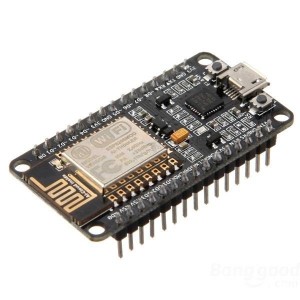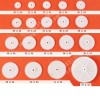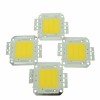Board developed WiFi-based ESP8266, an integrated circuit that contains modules GPIO, PWM, IIC, 1-Wire and ADC, all on one plate and easy to use syntax like Arduino for access to hardware and API style NodeJS for use network.
Grid connection example:
print(wifi.sta.getip())
--nil
wifi.setmode(wifi.STATION)
wifi.sta.config("SSID","password")
print(wifi.sta.getip())
--192.168.18.110
Example of I / O:
pin = 1
gpio.mode(pin,gpio.OUTPUT)
gpio.write(pin,gpio.HIGH)
gpio.mode(pin,gpio.INPUT)
print(gpio.read(pin))
HTTP client example:
-- A simple http client
conn=net.createConnection(net.TCP, false)
conn:on("receive", function(conn, pl) print(pl) end)
conn:connect(80,"121.41.33.127")
conn:send("GET / HTTP/1.1rnHost: www.nodemcu.comrn"
.."Connection: keep-alivernAccept: */*rnrn")
HTTP server example:
-- a simple http server
srv=net.createServer(net.TCP)
srv:listen(80,function(conn)
conn:on("receive",function(conn,payload)
print(payload)
conn:send("</code></pre>
<h1>Hello, NodeMCU.</h1>
<pre><code>")
end)
end)
PWM example:
function led(r,g,b)
pwm.setduty(1,r)
pwm.setduty(2,g)
pwm.setduty(3,b)
end
pwm.setup(1,500,512)
pwm.setup(2,500,512)
pwm.setup(3,500,512)
pwm.start(1)
pwm.start(2)
pwm.start(3)
led(512,0,0) -- red
led(0,0,512) -- blue
PWM example:
function led(r,g,b)
pwm.setduty(1,r)
pwm.setduty(2,g)
pwm.setduty(3,b)
end
pwm.setup(1,500,512)
pwm.setup(2,500,512)
pwm.setup(3,500,512)
pwm.start(1)
pwm.start(2)
pwm.start(3)
led(512,0,0) -- red
led(0,0,512) -- blue
Sample code for LED flashing (blinking):
lighton=0
tmr.alarm(0,1000,1,function()
if lighton==0 then
lighton=1
led(512,512,512)
-- 512/1024, 50% duty cycle
else
lighton=0
led(0,0,0)
end
end)
Example of interfacing with sensors:
-- read temperature with DS18B20
t=require("ds18b20")
t.setup(9)
addrs=t.addrs()
-- Total DS18B20 numbers, assume it is 2
print(table.getn(addrs))
-- The first DS18B20
print(t.read(addrs[1],t.C))
print(t.read(addrs[1],t.F))
print(t.read(addrs[1],t.K))
-- The second DS18B20
print(t.read(addrs[2],t.C))
print(t.read(addrs[2],t.F))
print(t.read(addrs[2],t.K))
-- Just read
print(t.read())
-- Just read as centigrade
print(t.read(nil,t.C))
-- Don't forget to release it after use
t = nil
ds18b20 = nil
package.loaded["ds18b20"]=nil
external resources











